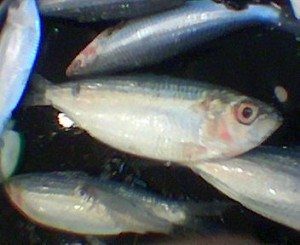Growing lettuce or herbs in your kitchen using an aquaponics system makes this a simple decision – you’re going to use betas or goldfish. No one has room for a tank that will house large, edible fish in their kitchen. To produce fish for the dinner table though, you do have options. A lot more variety than the common choice of Tilapia.
The first thing to consider is your climate, because if you’re going to raise a lot of fish it means growing them outdoors, in a greenhouse, or a separate building from your home. Winters may be mild where you are, but tilapia are warm climate fish. Some aquaponic farmers has outdoor tanks for summer and greenhouse tanks for winter. This keeps the fish comfortable and in the best possible environment for the weather. Growing tilapia totally indoors means giving them both heating and cooling. It’s more cost efficient to choose a fish well suited to your climate.
The second item, and really important, is the habitat needs of the species. Some fish would not survive in a crowded aquaponics tank. They need space to run. Choosing something like salmon would never work in the confines of a closed system like this.
Next, your food source is important. Yes, you can feed the fish commercial food, but that increases the cost of production. Some aquaponic growers grow their own food, such as worms and duckweed.
Here’s a list of different types of edible fish people have success with in an aquaponics system:
- Carp
- Catfish
- Barramundi
- Perch
- Bass
- Trout
- Tilapia
- Murray Cod
- Bluegill
- Sardinella
 If you have dreams of selling fresh fish, you might want to pick something other than tilapia simply because the market is flooded with cheap imports from China. Then again, if a large part of the population where you are would gladly have a safe source of the popular tilapia, you might have a ready and waiting market. Every neighborhood and community is different.
If you have dreams of selling fresh fish, you might want to pick something other than tilapia simply because the market is flooded with cheap imports from China. Then again, if a large part of the population where you are would gladly have a safe source of the popular tilapia, you might have a ready and waiting market. Every neighborhood and community is different.
Something else that’s important when deciding which fish to try is the rate of growth. Slow growing fish won’t put dinner on your plate very efficiently. You want a type of fish that will finish out to a nice fillet size as fast as possible. Not just to keep you eating, but also to keep your costs down. The longer you have to feed a fish to bring it to harvest size, the more each bite of food will cost. Efficiency is just as important as having safe, fresh food to eat.
There are aquaponic growers who grow one type of fish in winter and spring, and another in summer and fall when the weather is warmer. Once you study the temperature requirements of different fishes and consider the cost of heating their water and cooling it as the seasons change the ambient temperatures, you begin to see how this would make a lot of sense.